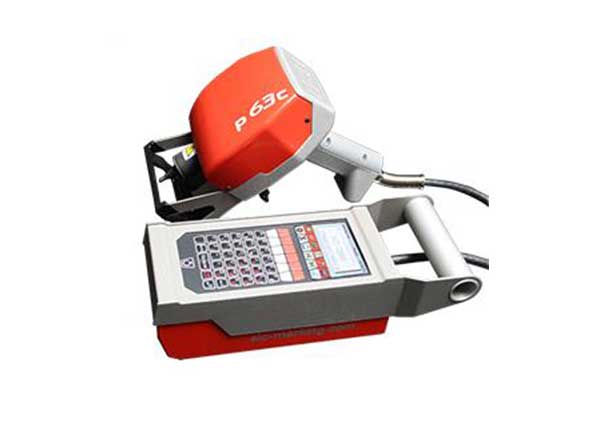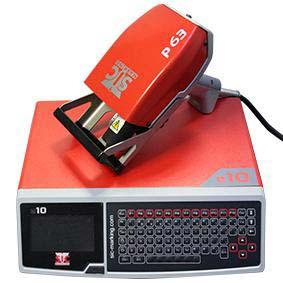Industrial marking on plastics
In this article you will learn about industrial marking on plastics, why it is one of the most widely used systems, its advantages and applications, and the different engraving techniques for different types of plastics.
Over the last few decades, the use of plastic in all sectors has become increasingly important. This is because plastic is a fairly inexpensive material , so manufacturing costs can be reduced and it is recyclable.
What is industrial marking on plastics?
Industrial marking is the process of engraving or coding parts, products or goods in general for traceability, identification or control during transportation. Codes, logos or text are normally used for this purpose.
Parts, articles and packaging made of plastic are used in many areas and industries, making it one of the materials that most need to be coded in order to be located or to obtain information to control its quality.
Among the sectors and industries that most frequently use plastics in their products are packaging, construction, transportation, automotive, medicine, electronics and agriculture. In all these sectors the marking of products, parts and other goods is a necessary process.
Next, we will learn about the benefits obtained by these industries and sectors in the marking process, as well as the uses that can be given to it nowadays.
Advantages and applications of industrial marking on plastics
As mentioned above, the marking of plastic goods is essential in many industries, as it brings wide-ranging benefits. Among the advantages and applications that industrial plastic coding has, we highlight:
- Traceability: industrial marking makes it possible to track the status and location of the product or merchandise at all times, as well as to know at what stage of the production process it is in.
- Uniformity: in practically all sectors, it is very important to be able to instantly identify a product in order to know its details: production date, batch, serial number, etc.
- Qualitycontrol: it is a very valid and useful process to detect production errors, thus having a wider control of the location and information of the product to withdraw it from the market.
Industrial marking on different types of plastics
It is important to be aware that marking on plastics requires some prior knowledge to differentiate the type of plastic and which coding technique is suitable for each one.
The following are the main characteristics of some of the most commonly used plastics in the above mentioned industries:
ABS: Acrylonitrile butadiene styrene is a type of plastic that can be molded by applying heat. It is one of the most difficult plastics to manufacture and is characterized by its rigidity, hardness and toughness, which gives it great strength and impact resistance. It is used in various sectors, especially in the automotive industry.
It can be easily molded, making it compatible with different coding techniques such as injection molding or laser engraving.
PBT: polybutylene terephthalate is a thermoplastic that is particularly suitable for food industry applications, as it is characterized by its high resistance to thermal deformation.
In addition, PBTs have very good friction and wear resistance properties. This characteristic makes PBT much easier to modify with fiber than PET, so it is generally also available as a fiber-reinforced product.
PET: polyethylene terephthalate is a colorless resin that can be more or less rigid, depending on the production process. It is a type of plastic that is lightweight and highly resistant to shocks and impacts. It is mainly used for packaging and foodstuffs such as plastic bottles and, since it can be aluminized, it is also widely used in flexible food packaging.
The ideal marking process or technique for this type of plastic is CO2 laser, although it can be coded with a wide range of lasers. On the other hand, the most common labeling systems for PET are quick-drying ink systems.
LDPE: Low density polyethylene is a thermoplastic polymer with high thermal and impact resistance. It is a type of plastic that is easily processed and can become transparent. It is mainly used in plastic bags, kitchen utensils such as cups and plates, bottles, toys and in pipes and tubes.
A disadvantage of the marking process on this type of plastic is that it is difficult to print, paint or glue on it, so the most recommended technique is laser marking.
The following is a review of the most commonly used marking techniques for plastics.
Plastic marking technologies and techniques
Industrial marking techniques and technologies can be defined as the set of processes used to code a part, a product or a batch of products in its production, either for traceability, identification or other objectives of the producer.
The most commonly used marking techniques in plastics are:
Industrial laser marking for plastics
Laser marking of plastics is one of the most widely used and longest lasting techniques available. Its application is very simple: the laser beam is projected on the surface of the product in question, marking in relief with great clarity.
There are several laser techniques for marking plastic, including the MOPA laser (widely used on dark plastics), the fiber laser (with techniques such as dyeing) and the CO2 laser, which can engrave and cut a wide range of plastics.
In general, almost all plastics can be laser marked, although their chemical composition is a component to be taken into account as they can react in very different ways to the marking process.
In Sivart you will find the most innovative technology with machinery such as the laser marker. Integrated Laser Head 104 Easy or the Laser Marking Machine L-BOX and XL-BOXThe Sivart Laser Marker is a guarantee of quality and safety for different types of sectors and industries.
Industrial micro-percussion marking for plastics
The process of micro-percussion marking on plastics is characterized by marking a few pressure points on a limited surface. Its main advantage is its low cost and effectiveness.

On the other hand, this technique requires secure clamping of the part and has the disadvantage of generating noise in the marking process.
All industrial marking machines that you will find in Sivart have services such as installation, commissioning and training for your company, in addition to a fast and efficient after-sales service .

Contact us without obligation and the Sivart team will advise you to offer you the best solution for your company and your sector.